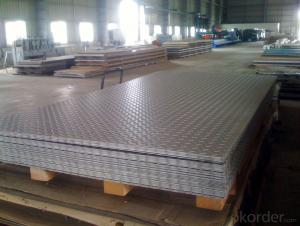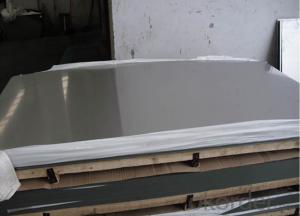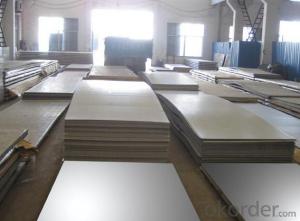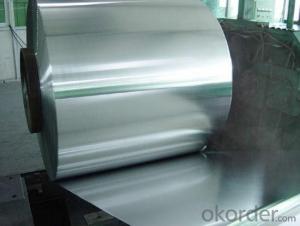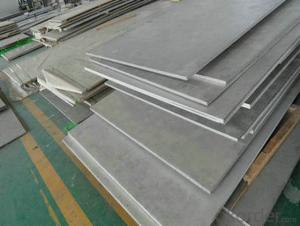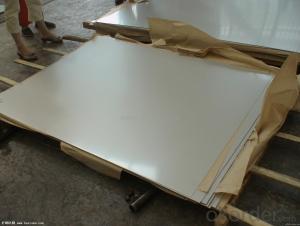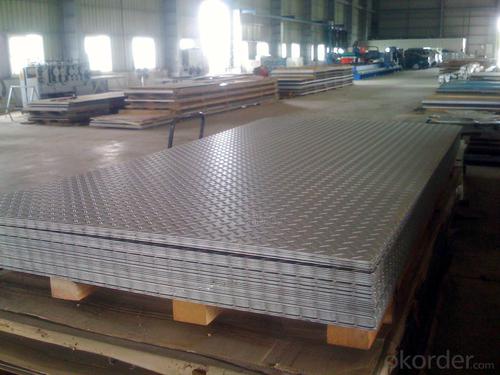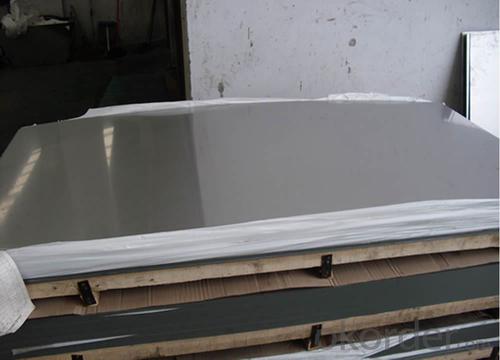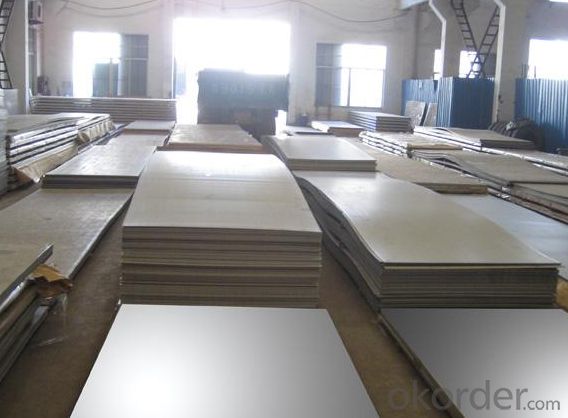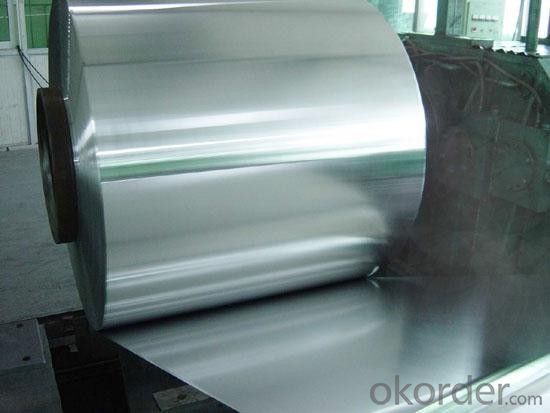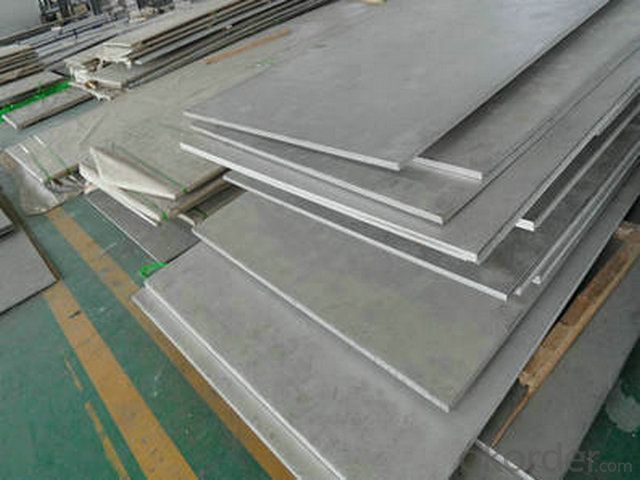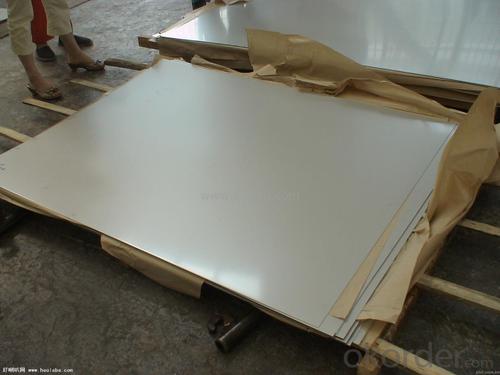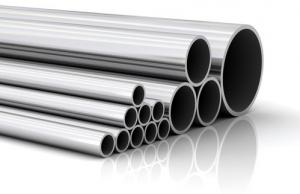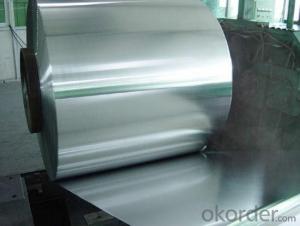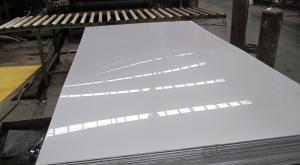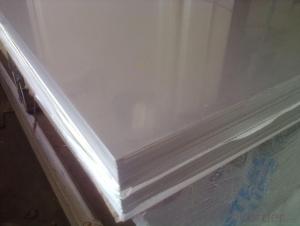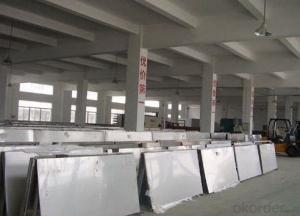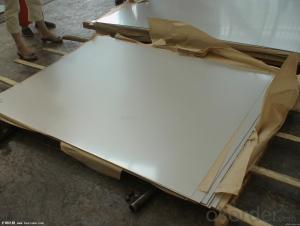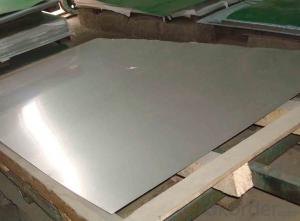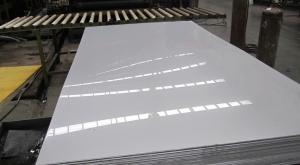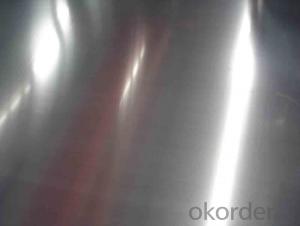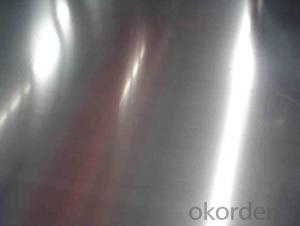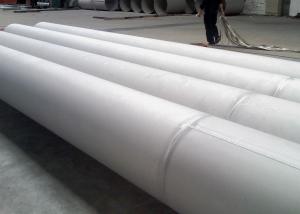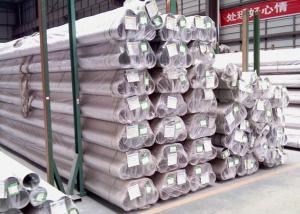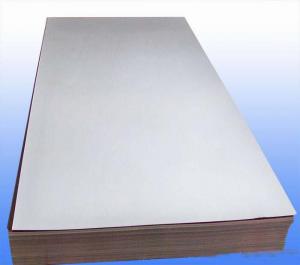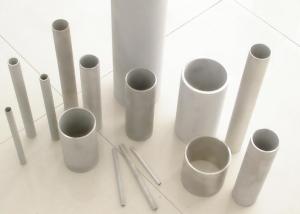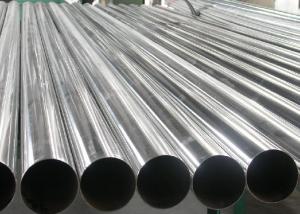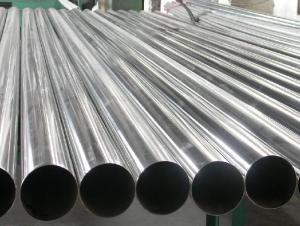Stainless Steel Plate 443 with No.4 Surface Treatment
- Loading Port:
- Shanghai
- Payment Terms:
- TT OR LC
- Min Order Qty:
- 500 m.t.
- Supply Capability:
- 5000000 m.t./month
OKorder Service Pledge
OKorder Financial Service
You Might Also Like
Hot sale stainless steel sheet 201/202/304/304l/310S/309S/316L/316Ti/316/316l/321,410/420/430/444/443/409L, and 904L.
Description of Stainless Steel Sheet:
Description | steel sheet,hot rolled steel sheet,cold rolled steel sheet, steel sheet,sheet,steel plate |
Standard | ASME, ASTM, EN ,BS,GB,DIN, JIS etc |
Application | Steel sheet applies to construction field, ships building industry, petroleum & chemical industries, war and electricity industries, food processing and medical industry, boiler heat exchanger, machinery and hardware fields. |
Packaging | Standard export sea-worthy packing |
Delivery time | 10-30 days |
Quality | No.1 |
Productivity | 500 tons/Day |
Note | Our company has cooperative relation between the domestic agents. Stainless steel sheet can be made accordingto the customers requirements. Fasten delivery. Quality assured. |
Contacts | If you have any question,please feel free contact me. |
Stainless steel sheet surface finish characteristics
Surface finish | Characteristics and application |
2B | The surface brightness and flatness of no2B is better than no2D. then through a special surface treatment to improve its mechanical properties,No2B could nearly satisfy comprehensive uses. |
No.1 | Polished with abrasive belt of grit#100-#200, have better brightness with discontinuous coarse stria, used as inner and external ornaments for building, electrical appliances and kitchen utensils etc. |
No.4 | Polished with abrasive belt of grit #150-#180,have better brightness with discontinuous coarse stria, but thinner than No3, are used as bathtub buildings inner and external ornaments electrical appliances kitchen utensils and food processing equipment etc. |
HL | Polished with abrasive belt of grit #150-#320 on the NO.4 finish and has continuous streaks, mainly used as buildings ornaments elevators, door of building, frontal plate etc. |
BA | Cold rolled, bright annealed and skin-passed, the product have excellent brightness and good reflexivity like mirror, kitchen apparatus, ornament etc. |
8K | The product have excellent brightness and prefer reflexivity can to be the mirror. |
Main Features of stainless steel sheet :
•Escalator, Elevator, Doors
•Furniture
•Production tools, Kitchen appliances, freezers, cold rooms
•Auto Parts
•Machinery and Packaging
•Equipment and Medical devices
•Transport system
Product Details:
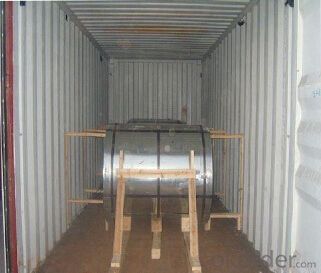
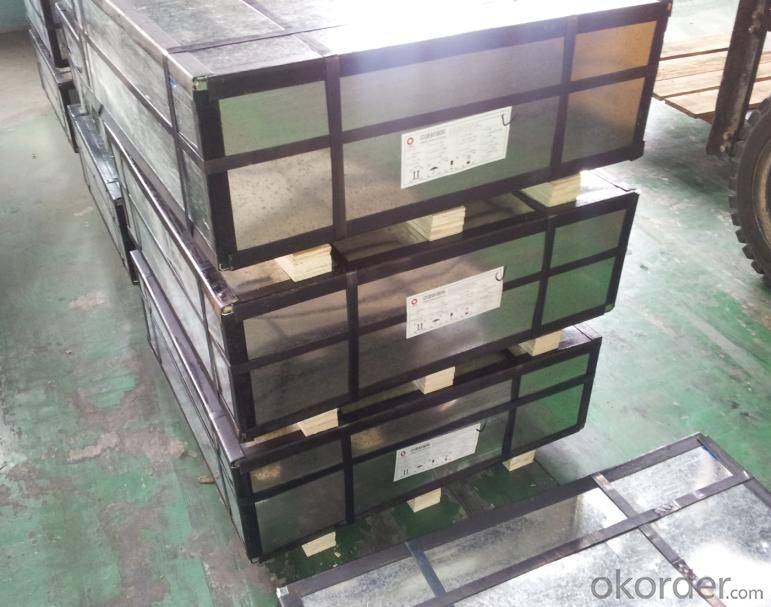
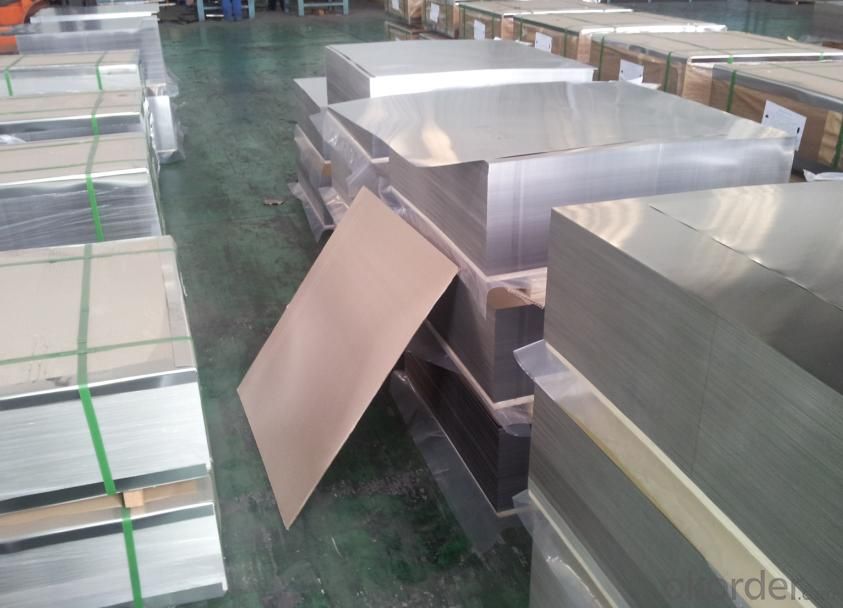
Sandard Seaworth Packing(wooden packing with water proof paper)
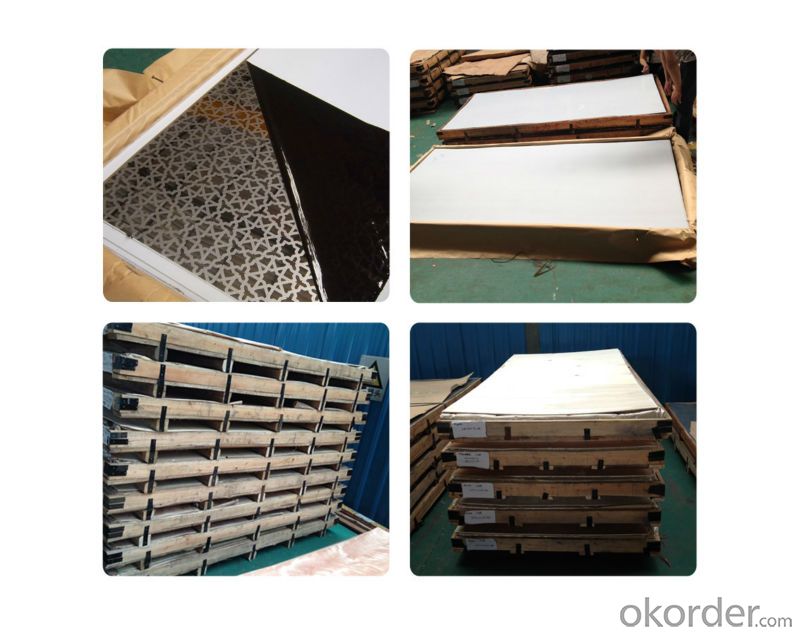
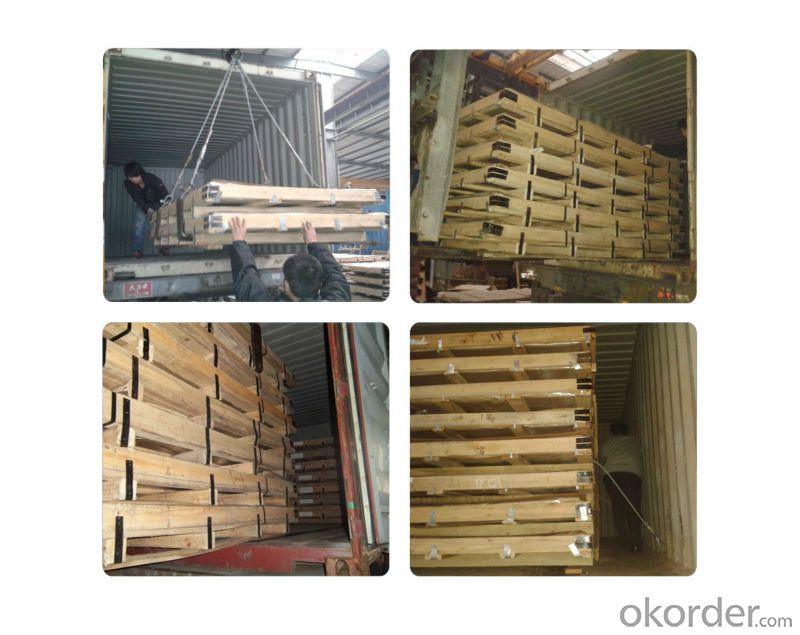
FAQ:
1. What's the quality?
very fine
2. How long get reply?
within 24 hours
If you have any question about stainless steel sheets,donot forget to sending the email to Us! You will get the competitive Price and have a very good experience about the Buying Process! CNBM International Corporation is always your trustful friend!
- Q: Can stainless steel sheets be used for flooring?
- Yes, stainless steel sheets can be used for flooring. Stainless steel is a durable and versatile material that is resistant to corrosion, stains, and scratches, making it suitable for high-traffic areas. It is commonly used in commercial and industrial settings, such as hospitals, kitchens, and food processing plants, where cleanliness and hygiene are crucial. Stainless steel flooring offers a sleek and modern look, it is easy to clean and maintain, and it can withstand heavy loads and extreme temperatures. Additionally, stainless steel sheets can be customized to fit any space and can be installed with various finishes to enhance slip resistance.
- Q: What are the standard sizes of stainless steel sheets?
- The standard sizes of stainless steel sheets vary depending on the specific industry and application. However, there are some commonly used standard sizes that are widely available. In the architectural and construction industry, the standard sizes of stainless steel sheets typically range from 4 feet by 8 feet (1220mm x 2440mm) to 5 feet by 10 feet (1524mm x 3048mm). These sizes are commonly used for cladding, roofing, and interior design applications. In the manufacturing and industrial sectors, stainless steel sheets come in various sizes, including 4 feet by 8 feet, 4 feet by 10 feet (1220mm x 3050mm), and even larger sizes like 5 feet by 12 feet (1524mm x 3658mm). These larger sizes are often used for fabrication, industrial machinery, and equipment manufacturing. It's important to note that custom sizes can also be fabricated based on specific project requirements. These custom sizes may include narrower or wider widths, longer or shorter lengths, or even different thicknesses to meet the needs of a particular application. Ultimately, the standard sizes of stainless steel sheets are determined by industry standards, market demand, and the capabilities of the manufacturers. It's always advisable to consult with suppliers or manufacturers to ensure the availability of the desired size before making a purchase.
- Q: What are the different types of stainless steel sheet perforations available?
- There are several types of stainless steel sheet perforations available, including round, square, slotted, hexagonal, and decorative patterns. These perforations vary in shape, size, and spacing, providing different aesthetics and functionality for various applications.
- Q: Stainless steel plate how to distinguish between good and bad, there are several thick?
- Similarly, in order to facilitate management, avoid confusion and prevent the use of accidents caused by confusion, the production plant in the material or packaging marked mark, batch number, status, specifications, quantity and production plant code and other signs. The markings to be drawn shall be consistent with the contents of the certificate of quality. There are three main methods: color logo (show the grade of color in the material provisions of parts with (in), print materials specified parts stamped or printed, to illustrate the types of materials, specifications, stove number, commonly used in large and medium thick steel plate or steel, listed above) (hanging in bundles or boxes of materials, indicating the designation, batch number, specifications, quantity and other signs).
- Q: What is the electrical resistance of stainless steel sheets?
- The electrical resistance of stainless steel sheets can vary depending on factors such as the grade of stainless steel, its thickness, and the temperature at which it is being used. However, in general, stainless steel is considered to have a relatively high electrical resistance compared to other metals.
- Q: How do you install stainless steel sheets?
- To install stainless steel sheets, you will need a few basic tools and follow these steps: 1. Measure and prepare: Start by measuring the area where you want to install the stainless steel sheets. Ensure that the surface is clean, dry, and free from any dust or debris. If needed, sand down any rough spots or imperfections on the surface. 2. Cut the sheets: Using a metal cutting tool like a circular saw or a jigsaw with a metal cutting blade, cut the stainless steel sheets to the desired size and shape. Make sure to wear safety goggles and gloves while cutting to protect yourself. 3. Apply adhesive: Apply a high-strength construction adhesive to the backside of the stainless steel sheet. Make sure to apply the adhesive evenly, leaving no gaps or air pockets. You can also use a notched trowel to spread the adhesive for better coverage. 4. Position and secure: Carefully place the stainless steel sheet onto the prepared surface, making sure to align it properly. Apply gentle and even pressure to ensure the sheet adheres to the surface. You can use a roller or a clean cloth to press the sheet firmly onto the surface. 5. Secure with screws: If necessary, use stainless steel screws to secure the sheet further. Place the screws along the edges and corners, ensuring they are evenly spaced. Make sure not to overtighten the screws to avoid damaging the sheet. 6. Trim and finish: If any excess stainless steel sheet is hanging over the edges, use a metal cutting tool to trim it down to the desired size. Once trimmed, smooth out any rough edges using a file or sandpaper. You can also use a stainless steel cleaner to remove any smudges or fingerprints and give it a polished finish. Remember to always follow the manufacturer's instructions for the specific stainless steel sheets you are using, as installation methods may vary slightly. Additionally, it is recommended to seek professional assistance if you are unsure or not comfortable with the installation process.
- Q: What are the different grades of stainless steel sheets?
- There are various grades of stainless steel sheets available, each with its own unique properties and characteristics. Some commonly used grades are: - Grade 304 Stainless Steel: This grade is widely used and is known for its excellent corrosion resistance, good formability, and high strength. It finds applications in food processing equipment, kitchen appliances, and chemical containers. - Grade 316 Stainless Steel: This grade offers even better corrosion resistance compared to grade 304 stainless steel. It is often used in marine environments or applications involving exposure to corrosive chemicals. Additionally, it has good welding and forming properties. - Grade 430 Stainless Steel: This is a ferritic grade that finds use in applications requiring good corrosion resistance and moderate strength. It is commonly found in automotive trim, kitchen equipment, and decorative applications. - Grade 410 Stainless Steel: This martensitic grade provides high strength and hardness. It is commonly used in applications where wear and corrosion resistance are crucial, such as cutlery, surgical instruments, and industrial equipment. - Grade 201 Stainless Steel: This low-nickel grade offers good formability and moderate corrosion resistance. It is frequently used in decorative applications like architectural trim, appliances, and furniture. These examples highlight the range of stainless steel sheet grades available. The choice of grade depends on the specific application and desired properties, such as corrosion resistance, strength, formability, and cost.
- Q: Can stainless steel sheets be used for food packaging or containers?
- Food packaging or containers can indeed utilize stainless steel sheets. The food industry widely employs stainless steel due to its numerous advantageous qualities. Its corrosion resistance guarantees that the food will not react with the container, ensuring safety for consumption. Moreover, stainless steel is highly durable, making it appropriate for long-term utilization in food packaging or containers. It is also effortless to clean and maintain, meeting the necessary hygiene standards. Furthermore, stainless steel containers or packaging can withstand extreme temperature changes, making them suitable for diverse food storage and transportation requirements. All in all, stainless steel sheets are a dependable and secure option for food packaging or containers.
- Q: What is the difference between 304 and 316 stainless steel sheets?
- 304 and 316 stainless steel sheets are both popular choices for a wide range of applications due to their excellent corrosion resistance and durability. However, there are some key differences between the two. Firstly, the most noticeable distinction is the composition of these stainless steel alloys. 304 stainless steel contains 18% chromium and 8% nickel, while 316 stainless steel contains 16% chromium, 10% nickel, and 2% molybdenum. This additional molybdenum in 316 stainless steel provides enhanced resistance to corrosion, especially in chloride-rich environments such as marine or coastal areas. Therefore, 316 stainless steel is often preferred for applications where exposure to harsh conditions or corrosive chemicals is expected. Secondly, the higher nickel and molybdenum content in 316 stainless steel make it more resistant to pitting and crevice corrosion, which can occur in stagnant or low-oxygen environments. This makes 316 stainless steel a better choice for applications involving prolonged exposure to acidic or alkaline solutions, such as chemical processing plants or medical equipment. Thirdly, the higher molybdenum content in 316 stainless steel also improves its resistance to high temperatures. It can withstand higher temperatures than 304 stainless steel, making it suitable for applications involving heat exposure, such as exhaust systems or boilers. Lastly, 316 stainless steel is generally more expensive than 304 stainless steel due to its higher alloy content. However, the added benefits and increased corrosion resistance of 316 stainless steel may justify the higher cost in certain applications where performance and longevity are crucial. In summary, while both 304 and 316 stainless steel sheets offer excellent corrosion resistance, 316 stainless steel provides superior resistance to harsh environments, acidic or alkaline solutions, and higher temperatures due to its higher nickel, chromium, and molybdenum content. The choice between the two will depend on the specific application and the level of corrosion resistance required.
- Q: What are the different types of stainless steel sheet finishes for sanitary applications?
- There are several different types of stainless steel sheet finishes that are commonly used for sanitary applications. These finishes are designed to provide a smooth and clean surface that is resistant to corrosion and bacteria growth. 1. #4 Brushed Finish: This is one of the most common finishes for stainless steel sheets used in sanitary applications. It has a brushed appearance that creates a uniform and consistent texture. It is easy to clean and maintain, making it ideal for environments where hygiene is crucial. 2. #8 Mirror Finish: This finish has a highly reflective surface that resembles a mirror. It is smooth and shiny, making it visually appealing and easy to clean. However, it is important to note that this finish may show scratches and fingerprints more easily than other finishes. 3. 2B Finish: This finish is often used for stainless steel sheets that will be further processed, such as in fabrication or welding. It has a dull and smooth appearance, providing a good base for additional treatments or coatings. 4. Satin Finish: Also known as a No. 4 finish, the satin finish has a low luster and a smooth texture. It is commonly used in sanitary applications where a clean and aesthetically pleasing surface is desired. 5. Bead Blast Finish: This finish is achieved by blasting the stainless steel sheet with fine glass beads. It creates a uniform, non-reflective surface that is easy to clean and resistant to corrosion. The bead blast finish is often used in food processing plants and pharmaceutical facilities. 6. Electropolished Finish: This finish involves an electrochemical process that removes a thin layer of the stainless steel surface, leaving behind a smooth and shiny appearance. It provides a high level of cleanliness and resistance to corrosion, making it suitable for sanitary applications in the pharmaceutical and biotech industries. It is important to consider the specific requirements of the sanitary application when choosing the appropriate stainless steel sheet finish. Factors such as corrosion resistance, ease of cleaning, and aesthetic appearance should be taken into consideration to ensure the best possible outcome.
Send your message to us
Stainless Steel Plate 443 with No.4 Surface Treatment
- Loading Port:
- Shanghai
- Payment Terms:
- TT OR LC
- Min Order Qty:
- 500 m.t.
- Supply Capability:
- 5000000 m.t./month
OKorder Service Pledge
OKorder Financial Service
Similar products
Hot products
Hot Searches
Related keywords
